|
Frog / Novo
1/72 scale
Bristol 138/A
by Mark Davies
|
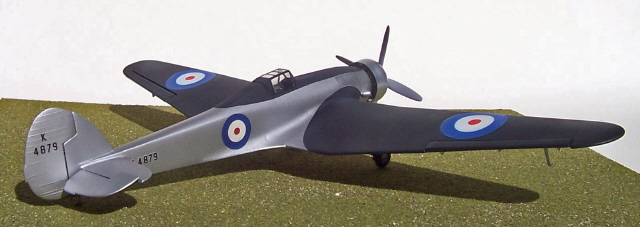 |
|
Bristol 138/A |

HyperScale is proudly supported by Squadron.com
Aviation record setting was all the rage
in the 1930, particularly with various forms of increased nationalism on
the rise throughout Europe. Altitudes of 50,000 feet were being
approached by the early 1930ís, and in 1933 a specification for a plane
to gain the high altitude record was issued in Britain. To meet this the
Bristol Company produced a single-seat plane powered by a supercharged
Bristol Pegasus air-cooled radial engine. A Bristol 138B with a
supercharged Rolls Royce Kestrel water-cooled in-line engine was planned
but not proceeded with.
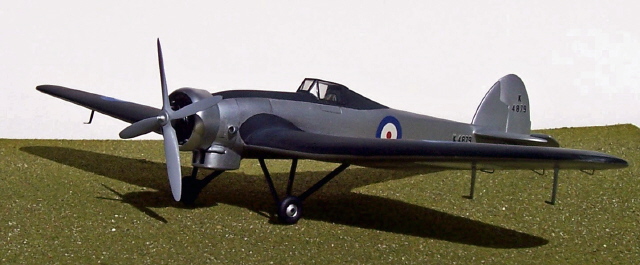
The Bristol 138 was a long-span (66 ft /20.13 m) wooden aircraft with
fixed undercarriage weighing only 5,310 lbs (2,409 kg) and had an
endurance of 2 ľ hours. It was equipped with an oxygen system and the
pilot wore a rather crude early form of high altitude flight suit.
Exhaust gases were ducted into the cockpit to warm the pilot (not a good
recipe for health in the event that the pilotís oxygen system failed Ė
see movie clip later).
The aircraft made its first flight record-breaking flight by Sqn Ldr
F.R.D. Swain was made on 28/09/36 and achieved an altitude of 49,967 ft,
although this was beaten in May 1937 by an Italian Caproni Ca 161whcih
reached 51,362 ft. Sqn Ldr Swain regained the record on 3-6-37 when he
reached 53,937 ft in the Bristol 138A.
Here is a link to my copy of a very interesting British Pathe video
of the record breaking flight with the old corny British news-readers
voice describing the achievement.
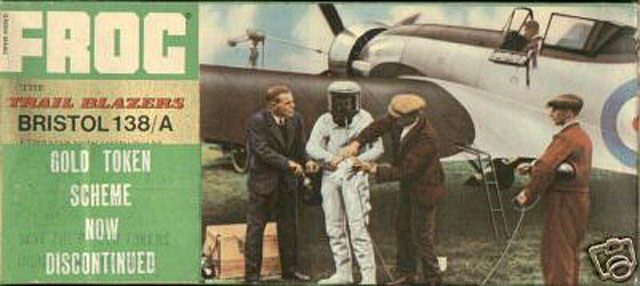
I have a fondness for unusual aircraft at
the best of times, and if they come form the Golden Age of aviation,
then all the better. Iíd been on the lookout for the frog kit of the
Bristol 138 for some time, and finally picked up a Novo moulding on an
obscure internet auction site for NZ$10 (about US$5). The old Frog
moulds had held up well by the time my Novo moulding was produced. At
first glance the basic kit looks very straightforward, with a few
delicate raised panel lines and what appear to be well shaped parts, and
only a few minor sink marks.
It soon became apparent that the pathetic
representation of an engine would have to go. It looked like it was
based on nine under-nourished machine bolts for cylinders stuck to a
blob for a crankcase to make a tiny diameter engine. The cowling on the
other hand was incredibly thick and quite stepped, and nothing like the
original (this seems surprising given that the frog box-art captures the
real planeís image quite well). Thereís nothing worth mentioning in the
way of cockpit detail, and the under-nose supercharger intercooler
radiator had no significant detail either.

I replaced the engine with an Aeroclub
white metal Pegasus which was very nicely cast. To this I added the
distinct exhaust pipes that curl around each cylinder head (unlike
common British practice where they would have gone forward into a
collector ring). These were made of solder, to which I added plastic
tube to represent the exhaust stacks that vented directly to the rear o
the cowl. The cowl took a lot of work to reshape and thin down. The
result was not perfect, but near enough for my purposes.
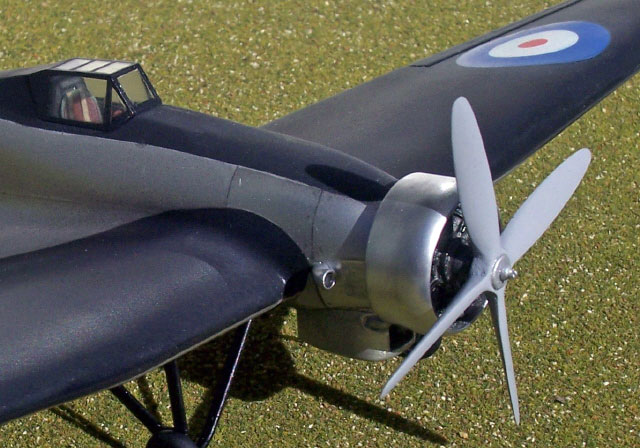
I replaced the two scoops (carburetor
intakes maybe?) to the rear of the cowl either side of the fuselage with
some spare parts from a Supermodel SM 81 as I thought these looked more
like the items in the reference photos I had. The airscrew was thinned
down and the hub detail enhanced. I added some detail to what I presume
is the supercharger intercooler, again based on photos, and replaced the
kitís integrally moulded piping with solder. A series of good photos,
including ones with engine cowl and panels removed, are
available in one of my Photobucket albums here, as well as some
simple plans and a colour scheme diagram. These may be of help to
modellers wishing to build a 138A.
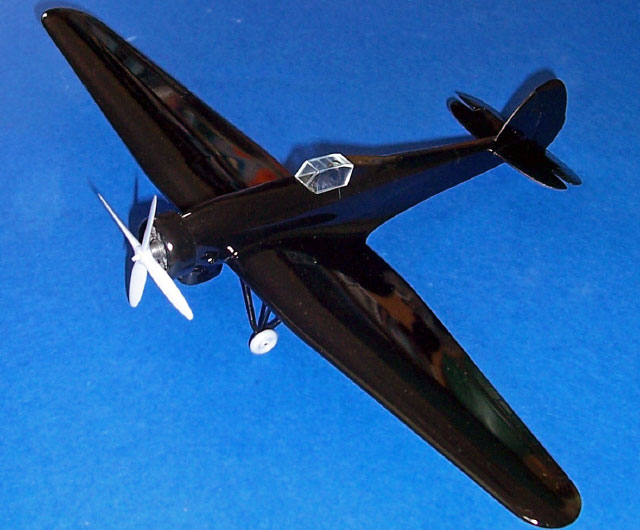
The cockpit interior was knocked together on a best-guess basis in the
absence of original photos, and I used a Spitfire control column as one
photo suggests the typical British spade-grip type was used.
I have seen one model of the Bristol 138A
with Blue wings, but various Internet inquiries and the available photos
all strongly suggest black is the correct colour. I used aluminium car
paint for the sliver dope finish, and Alclad II for the engine panels. I
used Gunze Tyre Black for the black paint work as I feel this suited the
scale well.
The kit decals were dreadful and most
crumbled away to nothing useable. The substitute roundel from a Maquette
Vickers Vernon werenít much better, but the overall result looks okay in
the display cabinet.
Click the thumbnails below to view larger
images:
[../../photogallery/photo00029173/real.htm]
Model, Images and Text
Copyright © 2007 by
Mark Davies
Page Created 02 April, 2007
Last Updated
24 December, 2007
Back to
HyperScale Main Page |
Home
| What's New |
Features |
Gallery |
Reviews |
Reference |
Forum |